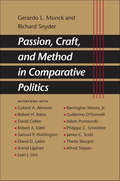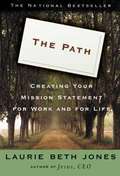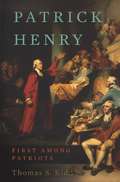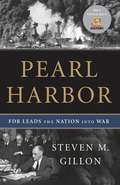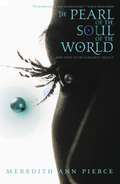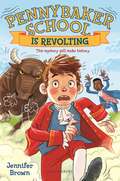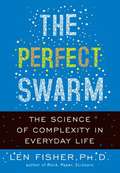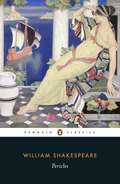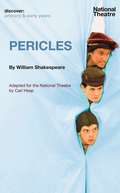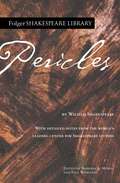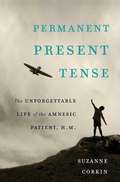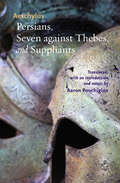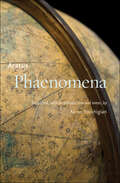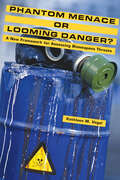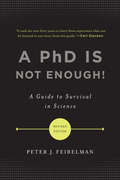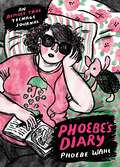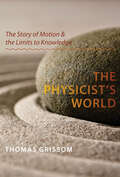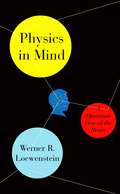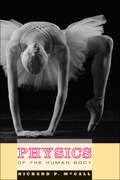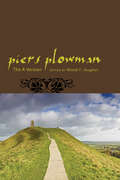- Table View
- List View
Passion, Craft, and Method in Comparative Politics
by Richard Snyder Gerardo L. MunckIn the first collection of interviews with the most prominent scholars in comparative politics since World War II, Gerardo L. Munck and Richard Snyder trace key developments in the field during the twentieth century. Organized around a broad set of themes—intellectual formation and training; major works and ideas; the craft and tools of research; colleagues, collaborators, and students; and the past and future of comparative politics—these in-depth interviews offer unique and candid reflections that bring the research process to life and shed light on the human dimension of scholarship. Giving voice to scholars who practice their craft in different ways yet share a passion for knowledge about global politics, Passion, Craft, and Method in Comparative Politics offers a wealth of insights into contemporary debates about the state of knowledge in comparative politics and the future of the field.
The Path: Creating Your Mission Statement for Work and for Life
by Laurie Beth JonesIndividuals and companies have been learning what history has demonstrated all along -- that people or groups with carefully defined missions have always led and surpassed those who have none. Yet the process of outlining that mission statement has been, up to now, an arduous one that all too few have committed the time, energy, and resources to undertake. In The Path, best-selling author Laurie Beth Jones provides inspiring and practical advice to lead readers through every step of both defining and fulfilling a mission. With more than ten years' experience in assisting groups and individuals, Jones offers clear, step-by-step guidance that can make writing a mission statement take a matter of hours rather than months or years. Rich with humor, exercises, mediations, and case histories, The Path is essential reading for anyone seeking a lighter, clearer way in the world.
Patrick Henry: First Among Patriots
by Thomas S. KiddMost Americans know Patrick Henry as a fiery speaker whose pronouncement "Give me liberty or give me death!” rallied American defiance to the British Crown. But Henry's skills as an orator-sharpened in the small towns and courtrooms of colonial Virginia-are only one part of his vast, but largely forgotten, legacy. As historian Thomas S. Kidd shows, Henry cherished a vision of America as a virtuous republic with a clearly circumscribed central government. These ideals brought him into bitter conflict with other Founders and were crystallized in his vociferous opposition to the U.S. Constitution. In Patrick Henry, Kidd pulls back the curtain on one of our most radical, passionate Founders, showing that until we understand Henry himself, we will neglect many of the Revolution's animating values.
Patrick Henry: First Among Patriots
by Thomas S KiddMost Americans know Patrick Henry as a fiery speaker whose pronouncement "Give me liberty or give me death!" rallied American defiance to the British Crown. But Henry's skills as an orator -- sharpened in the small towns and courtrooms of colonial Virginia -- are only one part of his vast, but largely forgotten, legacy. As historian Thomas S. Kidd shows, Henry cherished a vision of America as a virtuous republic with a clearly circumscribed central government. These ideals brought him into bitter conflict with other Founders and were crystallized in his vociferous opposition to the U.S. Constitution. In Patrick Henry, Kidd pulls back the curtain on one of our most radical, passionate Founders, showing that until we understand Henry himself, we will neglect many of the Revolution's animating values.
Pearl Harbor: FDR Leads the Nation Into War (Playaway Adult Nonfiction Ser.)
by Steven M. GillonFranklin D. Roosevelt famously called December 7, 1941, "a date which will live in infamy.” History would prove him correct; the events of that day-when the Japanese bombed Pearl Harbor-ended the Great Depression, changed the course of FDR's presidency, and swept America into World War II. In Pearl Harbor, acclaimed historian Steven M. Gillon provides a vivid, minute-by-minute account of Roosevelt's skillful leadership in the wake of the most devastating military assault in American history. FDR proved both decisive and deceptive, inspiring the nation while keeping the real facts of the attack a secret from congressional leaders and the public.Pearl Harbor explores the anxious and emotional events surrounding the attack on Pearl Harbor, showing how the president and the American public responded in the pivotal twenty-four hours that followed, a period in which America burst from precarious peace into total war.
The Pearl of the Soul of the World (The Darkangel Trilogy)
by Meredith Ann PierceThe spellbinding conclusion to the Darkangel Trilogy!Armed with a magical pearl imbued with all the sorcery and wisdom of the world, bestowed upon her by the Ancient known as Ravenna, Aeriel finally comes face-to-face with the White Witch and her vampire sons. Backed by her husband, his army of good, and a throng of magical steeds, she must unlock the power of the pearl to awaken her true destiny and save the world.
Penguin on Vacation (Penguin)
by Ms. Salina YoonGeisel Honor-winning author/illustrator Salina Yoon's beloved character Penguin hits the beach in Penguin on Vacation--a charming picture book that's perfect for summer vacation.Penguin is tired of the snow and cold--so he decides to visit the beach! But when his favorite activities like skiing and skating don't work so well on sand, can a new friend help Penguin learn how to have fun in the sun? Seasoned, award-winning author/illustrator Salina Yoon's charming text and bright, energetic illustrations ensure that readers will be clamoring for more Penguin stories--wherever they make their home!Don't miss these other books from Salina Yoon!The Penguin seriesPenguin and PineconePenguin on VacationPenguin in LovePenguin and PumpkinPenguin's Big AdventurePenguin's Christmas WishPenguin and PenelopeThe Bear seriesFoundStormy NightBear's Big DayThe Duck, Duck, Porcupine seriesDuck, Duck, PorcupineMy Kite is Stuck! And Other StoriesThat's My Book! And Other StoriesBe a Friend
Pennybaker School Is Revolting: Holy Places In Louisiana
by Jennifer BrownSixth-grader Thomas Fallgrout is finally settling in at Pennybaker School, home of student unicyclers, thespians, acrobats, and other classmates with unique and unusual gifts. After a bit of an unusual start to the school year, things are finally starting to seem normal. As normal as they ever could be at this decidedly unusual school, anyway. Until his Facts After the Fact (aka History) teacher Mr. Faboo goes missing, right in the middle of his favorite lesson of the year, leaving the class not a clue as to why or how. And his Four Square (aka Phys Ed) teacher introduces a new unit that is decidedly distressing. And Thomas's neighbor, the formerly friendless Chip (he of the wacky sock collection), swoops in and bonds with all of Thomas's friends, leaving Thomas in the dust. This year is getting out of control, and it's up to Thomas to take matters into his own hands. It's time… for a revolution. Featuring black-and-white illustrations throughout, this wildly funny follow-up to Pennybaker School is Headed for Disaster is full of humor and wacky wit by acclaimed author Jennifer Brown.
The Perfect Swarm: The Science of Complexity in Everyday Life
by Len FisherOne of the greatest discoveries of recent times is that the complex patterns we find in life are often produced when all of the individuals in a group follow the same simple rule. This process of "self-organization” reveals itself in the inanimate worlds of crystals and seashells, but as Len Fisher shows, it is also evident in living organisms, from fish to ants to human beings. The coordinated movements of fish in shoals, for example, arise from the simple rule: "Follow the fish in front.” Traffic flow arises from simple rules: "Keep your distance” and "Keep to the right.”Now, in his new book, Fisher shows how we can manage our complex social lives in an ever more chaotic world. His investigation encompasses topics ranging from "swarm intelligence” to the science of parties and the best ways to start a fad. Finally, Fisher sheds light on the beauty and utility of complexity theory. An entertaining journey into the science of everyday life, The Perfect Swarm will delight anyone who wants to understand the complex situations in which we so often find ourselves.
Pericles: With The Story Of The Prince Of Tyre... .
by William Shakespeare Eugene GiddensPericles, Prince of Tyre, must solve a riddle in order to marry the daughter of the King of Antioch, or be put to death. But when the answer reveals a horrific secret, the young man faces his greatest dilemma. Danger and adventure follow as Pericles flees the city to find his fortune elsewhere, in a romantic drama of families lost and reunited, evil punished and virtue rewarded.
Pericles: With The Story Of The Prince Of Tyre... . (Oberon Plays for Young People)
by William Shakespeare Carl HeapAdapted for The National Theatre by Carl Heap 'The world to me is like a lasting storm' An exciting tale of shipwrecks and magic, villains and heroes, and a child's fight for survival in a foreign land. Join Pericles on his epic travels of adventure and discovery. Primary Classics, produced by the National Theatre's Discover programme, aims to introduce children aged 7 to 11 to Shakespeare. This version of Pericles, adapted and originally directed by Carl Heap, preserves the core of Shakespeare's plot, retains the original langauge, yet is presented very much with the target age group in mind. Carl Heap's introduction will help readers, teachers and practitioners alike to imagine or produce their own version.
Pericles
by Paul Werstine William Shakespeare Barbara MowatPericles tells of a prince who risks his life to win a princess, but discovers that she is in an incestuous relationship with her father and flees to safety. He marries another princess, but she dies giving birth to their daughter. The adventures continue from one disaster to another until the grown-up daughter pulls her father out of despair and the play moves toward a gloriously happy ending. The authoritative edition of Pericles from The Folger Shakespeare Library, the trusted and widely used Shakespeare series for students and general readers, includes: -Freshly edited text based on the best early printed version of the play -Full explanatory notes conveniently placed on pages facing the text of the play -Scene-by-scene plot summaries -A key to the play’s famous lines and phrases -An introduction to reading Shakespeare’s language -An essay by a leading Shakespeare scholar providing a modern perspective on the play -Fresh images from the Folger Shakespeare Library’s vast holdings of rare books -An annotated guide to further reading Essay by Margaret Jane Kidnie The Folger Shakespeare Library in Washington, DC, is home to the world’s largest collection of Shakespeare’s printed works, and a magnet for Shakespeare scholars from around the globe. In addition to exhibitions open to the public throughout the year, the Folger offers a full calendar of performances and programs. For more information, visit Folger.edu.
Permanent Present Tense: The Unforgettable Life of the Amnesic Patient, H. M.
by Suzanne CorkinIn 1953, 27-year-old Henry Gustave Molaison underwent an experimental "psychosurgical” procedure-a targeted lobotomy-in an effort to alleviate his debilitating epilepsy. The outcome was unexpected-when Henry awoke, he could no longer form new memories, and for the rest of his life would be trapped in the moment.But Henry's tragedy would prove a gift to humanity. As renowned neuroscientist Suzanne Corkin explains in Permanent Present Tense, she and her colleagues brought to light the sharp contrast between Henry's crippling memory impairment and his preserved intellect. This new insight that the capacity for remembering is housed in a specific brain area revolutionized the science of memory. The case of Henry-known only by his initials H. M. until his death in 2008-stands as one of the most consequential and widely referenced in the spiraling field of neuroscience. Corkin and her collaborators worked closely with Henry for nearly fifty years, and in Permanent Present Tense she tells the incredible story of the life and legacy of this intelligent, quiet, and remarkably good-humored man. Henry never remembered Corkin from one meeting to the next and had only a dim conception of the importance of the work they were doing together, yet he was consistently happy to see her and always willing to participate in her research. His case afforded untold advances in the study of memory, including the discovery that even profound amnesia spares some kinds of learning, and that different memory processes are localized to separate circuits in the human brain. Henry taught us that learning can occur without conscious awareness, that short-term and long-term memory are distinct capacities, and that the effects of aging-related disease are detectable in an already damaged brain.Undergirded by rich details about the functions of the human brain, Permanent Present Tense pulls back the curtain on the man whose misfortune propelled a half-century of exciting research. With great clarity, sensitivity, and grace, Corkin brings readers to the cutting edge of neuroscience in this deeply felt elegy for her patient and friend.
Persians, Seven against Thebes, and Suppliants (Johns Hopkins New Translations from Antiquity)
by AeschylusAaron Poochigian’s new translations of Aeschylus’s earliest extant plays provide the clearest rendering yet of their formal structure. The distinction between spoken and sung rhythms is as sharp as it is in the source texts, and for the first time readers in English can fully grasp the balanced, harmonious arrangement of choral odes. The importance of these works to the history of drama and tragedy and to the history of classical literature is beyond question, and their themes of military hubris and foreign versus native are deeply relevant today. Persians offers a surprisingly sympathetic portrayal of the Athenians’ most hated enemy; in Seven against Thebes Argive invaders, though no less Greek than the Thebans themselves, are portrayed as barbarians; and in Suppliants the city of Argos is called upon to protect Egyptian refugees. Based on textual evidence and the archaeological remains of the Theater of Dionysus at Athens, Poochigian’s introductory overview of stage properties and accompanying stage directions allow readers to experience the plays as they were performed in their own time. He is most careful in his translations of the plays’ choral odes. Instead of rendering them with little or no form, Poochigian has preserved the comprehensive structures Aeschylus himself employed. Readers are thus able to recognize Aeschylus as a master of poetry as well as of drama. Poochigian’s translations are the most accurate renditions of the poetry and dramaturgy of the original works available. Intended to be both read as literature and performed as plays, these translations are lucid and readable, while remaining staunchly faithful to the texts.
Personal Finance
by Rachel Siegel Carol YachtPersonal Finance by Rachel Siegel and Carol Yacht is a comprehensive Personal Finance text which includes a wide range of pedagogical aids to keep students engaged and instructors on track. If you would like to hear Rachel talk about her book, and the Personal Finance course listen here to her podcast. This book is arranged by learning objectives. The headings, summaries, reviews, and problems all link together via the learning objectives. This helps instructors to teach what they want, and to assign the problems that correspond to the learning objectives covered in class. Personal Finance includes personal finance planning problems with links to solutions, and personal application exercises, with links to their associated worksheet(s) or spreadsheet(s). In addition, the text boasts a large number of links to videos, podcasts, experts' tips or blogs, and magazine articles to illustrate the practical applications for concepts covered in the text. Finally, the modular nature of the chapters lends itself to the Flat World Knowledge publishing model allowing instructors to adapt the textbook to the exact needs of their specific class and student body.
Phaenomena (Johns Hopkins New Translations from Antiquity)
by AratusAfter the Iliad and the Odyssey, the Phaenomena was the most widely read poem in the ancient world. Its fame was immediate. It was translated into Latin by Ovid and Cicero and quoted by St. Paul in the New Testament, and it was one of the few Greek poems translated into Arabic. Aratus’ Phaenomena is a didactic poem—a practical manual in verse that teaches the reader to identify constellations and predict weather. The poem also explains the relationship between celestial phenomena and such human affairs as agriculture and navigation. Despite the historical and pedagogical importance of the poem, no English edition suitable for students and general readers has been available for decades. Aaron Poochigian’s lively translation makes accessible one of the most influential poets of antiquity. Poochigian's interpretation of the Phaenomena reestablishes the ancient link between poetry and science and demonstrates that verse is an effective medium for instruction. Featuring references to Classical mythology and science, star charts of the northern and southern skies, extensive notes, and an introduction to the work’s stylistic features and literary reception, this dynamic work will appeal to students of Ancient Greece who want to deepen their understanding of the Classical world.
Phantom Menace or Looming Danger?: A New Framework for Assessing Bioweapons Threats
by Kathleen M. VogelThe horrifying terrorist attacks on September 11, 2001, and the anthrax strikes that soon followed gave the United States new reason to fear unconventional enemies and atypical weapons. These fears have prompted extensive research, study, and planning within the U.S. military, intelligence, and policy communities regarding potential attacks involving biological weapons. In Phantom Menace or Looming Danger?, Kathleen M. Vogel argues for a major shift in how analysts assess bioweapons threats. She calls for an increased focus on the social and political context in which technological threats are developed.Vogel uses case studies to illustrate her theory: Soviet anthrax weapons development, the Iraqi mobile bioweapons labs, and two synthetic genomic experiments. She concludes with recommendations for analysts and policymakers to integrate sociopolitical analysis with data analysis, thereby making U.S. bioweapon assessments more accurate. Students of security policy will find her innovative framework appealing, her writing style accessible, and the many illustrations helpful. These features also make Phantom Menace or Looming Danger? a must-read for government policymakers and intelligence experts.
A PhD Is Not Enough!: A Guide to Survival in Science
by Peter J. FeibelmanEverything you ever need to know about making it as a scientist.Despite your graduate education, brainpower, and technical prowess, your career in scientific research is far from assured. Permanent positions are scarce, science survival is rarely part of formal graduate training, and a good mentor is hard to find.In A Ph.D. Is Not Enough!, physicist Peter J. Feibelman lays out a rational path to a fulfilling long-term research career. He offers sound advice on selecting a thesis or postdoctoral adviser; choosing among research jobs in academia, government laboratories, and industry; preparing for an employment interview; and defining a research program. The guidance offered in A Ph.D. Is Not Enough! will help you make your oral presentations more effective, your journal articles more compelling, and your grant proposals more successful.A classic guide for recent and soon-to-be graduates, A Ph.D. Is Not Enough! remains required reading for anyone on the threshold of a career in science. This new edition includes two new chapters and is revised and updated throughout to reflect how the revolution in electronic communication has transformed the field.
Phoebe's Diary
by Phoebe WahlINSTANT NATIONAL BESTSELLER! Take a peek inside Phoebe&’s Diary into a bracingly honest illustrated account of the explosive turmoil and joy of adolescence, based on the author&’s actual teenage journals. Meet Phoebe. She is cool and insecure, talented and vulnerable, sexy and awkward, driven and confused, ecstatic and tragic. Like you. And here is her diary, packed full of invaluable friends and heartbreaking crushes, spectacular playlists and vintage outfits, drama nerds and art kids, old wounds and new love. Based on her own teenage diary, Phoebe Wahl has melded truth with fiction and art with text, casting a spell that brings readers deep into the experience of growing up.
The Physicist's World: The Story of Motion and the Limits to Knowledge
by Thomas GrissomHow do students learn about physics without picking up a 1,000-page textbook chock-full of complicated equations? The Physicist’s World is the answer. Here, Thomas Grissom explains clearly and succinctly what physics really is: the science of understanding how everything in the universe moves.From the earliest efforts by Presocratic philosophers contemplating motion to the principal developments of physics through the end of the twentieth century, Grissom tells the unfolding story of our attempt to quantify the material world and to conceptualize the nature of physical laws. Through the centuries, questions about why things move proved to be unanswerable in any absolute, satisfying way. Instead the question became how things move, a direction of thought that led to the rise of modern science. Physics emerged as a mathematical description of the motion of matter and energy, a description believed to be complete and exact, limited only by the precision of measurement. Grissom shows that in one of the great intellectual ironies, advancements in twentieth-century physics affirmed instead that this quantitative theory was capable of discovering its own limits. There is only so much that physics can reveal about the world. This is physics for the thinking person, especially students who enjoy learning concepts, histories, and interpretations without becoming mired in complex mathematical detail. A concise survey of the field of physics, Grissom’s book offers students and professionals alike a unique perspective on what physicists do, how physics is done, and how physicists view the world.
The Physicist's World: The Story of Motion and the Limits to Knowledge
by Thomas GrissomHow do students learn about physics without picking up a 1,000-page textbook chock-full of complicated equations? The Physicist’s World is the answer. Here, Thomas Grissom explains clearly and succinctly what physics really is: the science of understanding how everything in the universe moves.From the earliest efforts by Presocratic philosophers contemplating motion to the principal developments of physics through the end of the twentieth century, Grissom tells the unfolding story of our attempt to quantify the material world and to conceptualize the nature of physical laws. Through the centuries, questions about why things move proved to be unanswerable in any absolute, satisfying way. Instead the question became how things move, a direction of thought that led to the rise of modern science. Physics emerged as a mathematical description of the motion of matter and energy, a description believed to be complete and exact, limited only by the precision of measurement. Grissom shows that in one of the great intellectual ironies, advancements in twentieth-century physics affirmed instead that this quantitative theory was capable of discovering its own limits. There is only so much that physics can reveal about the world. This is physics for the thinking person, especially students who enjoy learning concepts, histories, and interpretations without becoming mired in complex mathematical detail. A concise survey of the field of physics, Grissom’s book offers students and professionals alike a unique perspective on what physicists do, how physics is done, and how physicists view the world.
Physics in Mind: A Quantum View of the Brain
by Werner LoewensteinNo one can escape a sense of awe when reflecting on the workings of the mind: we see, we hear, we feel, we are aware of the world around us. But what is the mind? What do we mean when we say we are "aware” of something? What is this peculiar state in our heads, at once utterly familiar and bewilderingly mysterious, that we call awareness or consciousness?In Physics in Mind, eminent biophysicist Werner R. Loewenstein argues that to answer these questions, we must first understand the physical mechanisms that underlie the workings of the mind. And so begins an exhilarating journey along the sensory data stream of the brain, which shows how our most complex organ processes the vast amounts of information coming in through our senses to create a coherent, meaningful picture of the world. Bringing information theory to bear on recent advances in the neurosciences, Loewenstein reveals a web of immense computational power inside the brain. He introduces the revolutionary idea that quantum mechanics could be fundamental to how our minds almost instantaneously deal with staggering amounts of information, as in the case of the information streaming through our eyes.Combining cutting-edge research in neuroscience and physics, Loewenstein presents an ambitious hypothesis about the parallel processing of sensory information that is the heart, hub, and pivot of the cognitive brain. Wide-ranging and brimming with insight, Physics in Mind breaks new ground in our understanding of how the mind works.
Physics in Mind: A Quantum View of the Brain
by Werner LoewensteinNo one can escape a sense of awe when reflecting on the workings of the mind: we see, we hear, we feel, we are aware of the world around us. But what is the mind? What do we mean when we say we are "aware" of something? What is this peculiar state in our heads, at once utterly familiar and bewilderingly mysterious, that we call awareness or consciousness? In Physics in Mind, eminent biophysicist Werner R. Loewenstein argues that to answer these questions, we must first understand the physical mechanisms that underlie the workings of the mind. And so begins an exhilarating journey along the sensory data stream of the brain, which shows how our most complex organ processes the vast amounts of information coming in through our senses to create a coherent, meaningful picture of the world. Bringing information theory to bear on recent advances in the neurosciences, Loewenstein reveals a web of immense computational power inside the brain. He introduces the revolutionary idea that quantum mechanics could be fundamental to how our minds almost instantaneously deal with staggering amounts of information, as in the case of the information streaming through our eyes. Combining cutting-edge research in neuroscience and physics, Loewenstein presents an ambitious hypothesis about the parallel processing of sensory information that is the heart, hub, and pivot of the cognitive brain. Wide-ranging and brimming with insight, Physics in Mind breaks new ground in our understanding of how the mind works.
Physics of the Human Body
by Richard P. McCallRichard P. McCall's fascinating book explains how basic concepts of physics apply to the fundamental activities and responses of the human body, a veritable physics laboratory. Blood pumping through our veins is a vital example of Poiseuille flow; the act of running requires friction to propel the runner forward; and the quality of our eyesight demonstrates how properties of light enable us to correct near- and far-sightedness. Each chapter discusses a fundamental physics concept and relates it to the anatomy and physiology of applicable parts of the body. Topics include motion, fluids and pressure, temperature and heat, speech and hearing, electrical behaviors, optics, biological effects of radiation, and drug concentrations. Clear and compelling, with a limited amount of math, McCall's descriptions allow readers of all levels to appreciate the physics of the human physique. Physics of the Human Body will help curious high school students, undergraduates with medical aspirations, and practicing medical professionals understand more about the underlying physics principles of the human body.
Piers Plowman: The A Version
by Mí 267 Eál F. VaughanThe fourteenth-century Piers Plowman is one of the most influential poems from the Age of Chaucer. Following the character Will on his quest for the true Christian life, the three dream narratives that make up this work address a number of pressing political, social, moral, and educational issues of the late Middle Ages. Míceál F. Vaughan presents a fresh edition of the A version, an earlier and shorter version of this great work.Unlike the B and C versions, there is no modern, affordable edition of the A version available. For the first time in decades, students and scholars of medieval literature now have access to this important work. Vaughan’s clean, uncluttered text is accompanied by ample glossing of difficult Middle English words. An expansive introduction, which includes a narrative summary of the poem, textual notes, detailed endnotes, and a select bibliography frame the text, making this edition ideal for classroom use.This is the first classroom edition of the A version since Thomas A. Knott and David C. Fowler’s celebrated 1952 publication. Based on an early-fifteenth-century manuscript from the University of Oxford’s Bodleian Library, Vaughan’s text offers a unique rendition of the poem, and it is the first modern edition not to attribute the poem to William Langland. By conservatively editing one important witness of Piers Plowman, Vaughan takes a new generation of students to an early version of this great medieval poem.
